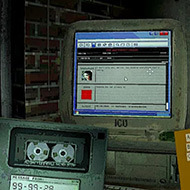Storebound places the player in charge of a compact supply hub where each action affects the flow of stock, requests, and customer movement. The introduction guides the player through early steps, showing how to maintain the area, balance tasks, and adjust to shifting demands. As the session expands, Storebound presents new challenges that require planning and a structured approach.
Managing Goods and Task Cycles
The foundation of Storebound lies in how the player organizes items, restocks shelves, and responds to incoming requests. Each round introduces mix-ups, misplaced objects, or increased pressure from customers. Efficiency builds over time as the player develops a routine that improves stock handling.
- Sort products and assign them to proper areas.
- Prevent shortages by recognizing demand spikes.
- Respond to special customer behaviors.
- Maintain steady flow through planning.
Features, Challenges, and Player Growth
Storebound uses incremental challenges that help the player refine their workflow. Patterns emerge—certain periods become busier, some customers require more attention, and specific items move faster depending on the scenario. The structure encourages small adjustments that gradually enhance overall performance.
- Handle incoming shipments at the right moment.
- Reduce congestion by organizing pathways.
- Adjust stock ratios to match shifting requests.
- Use quick assessments to stabilize peak times.
Tips, Hacks, and FAQ Insights
Players often search for ways to maintain balance while running Storebound. Although the structure does not rely on strict shortcuts, consistent observation helps avoid many common roadblocks.
- Plan shelf layouts: Positioning items intelligently saves time later.
- Study customer movement: Certain paths create recurring delays.
- Keep backup stock: A reserve prevents sudden shortages.
- Track item rotation: Items with faster turnover deserve priority space.
Storebound offers a structured yet flexible environment focused on organization, timing, and quick decisions. Through steady practice, players improve their workflow, adapt to changing demand patterns, and refine the way they manage the store’s ongoing activity.

















































































